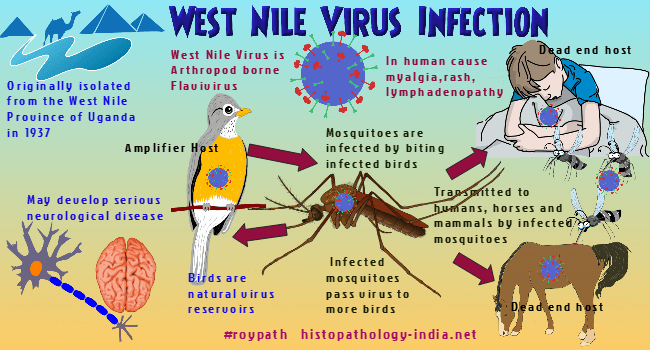|

Custom Search
|
|
Infectious Disease Online Pathology of West Nile Virus Infection
|

West Nile Virus is an important arthropod borne flavivirus which usually causes a mild infection called West Nile Fever in human and horses. This virus, originally isolated from the West Nile Province of Uganda in 1937, has since been recovered from many other African countries and from Israel. West Nile virus also occurs in India. The Tamilnad strain of West Nile virus was isolated in 1955 from Culex vishnui mosquitoes collected from near Vellore, but it has not been shown to be clinically important here. West Nile Virus is maintained naturally in wild birds and transmitted by Culex mosquitoes. Clinical disease in man is a febrile illness with headache, myalgia, maculopapular rash, lymphadenopathy and leucopenia. West Nile Virus may develop acute neurologic disease, which can be severe or even fatal, including West Nile Virus meningitis, encephalitis, and an irreversible acute flaccid paralysis or poliomyelitis-like syndrome. Encephalitis is usually rare.
|
|
|
Copyright © 2022 histopathology-india.net

